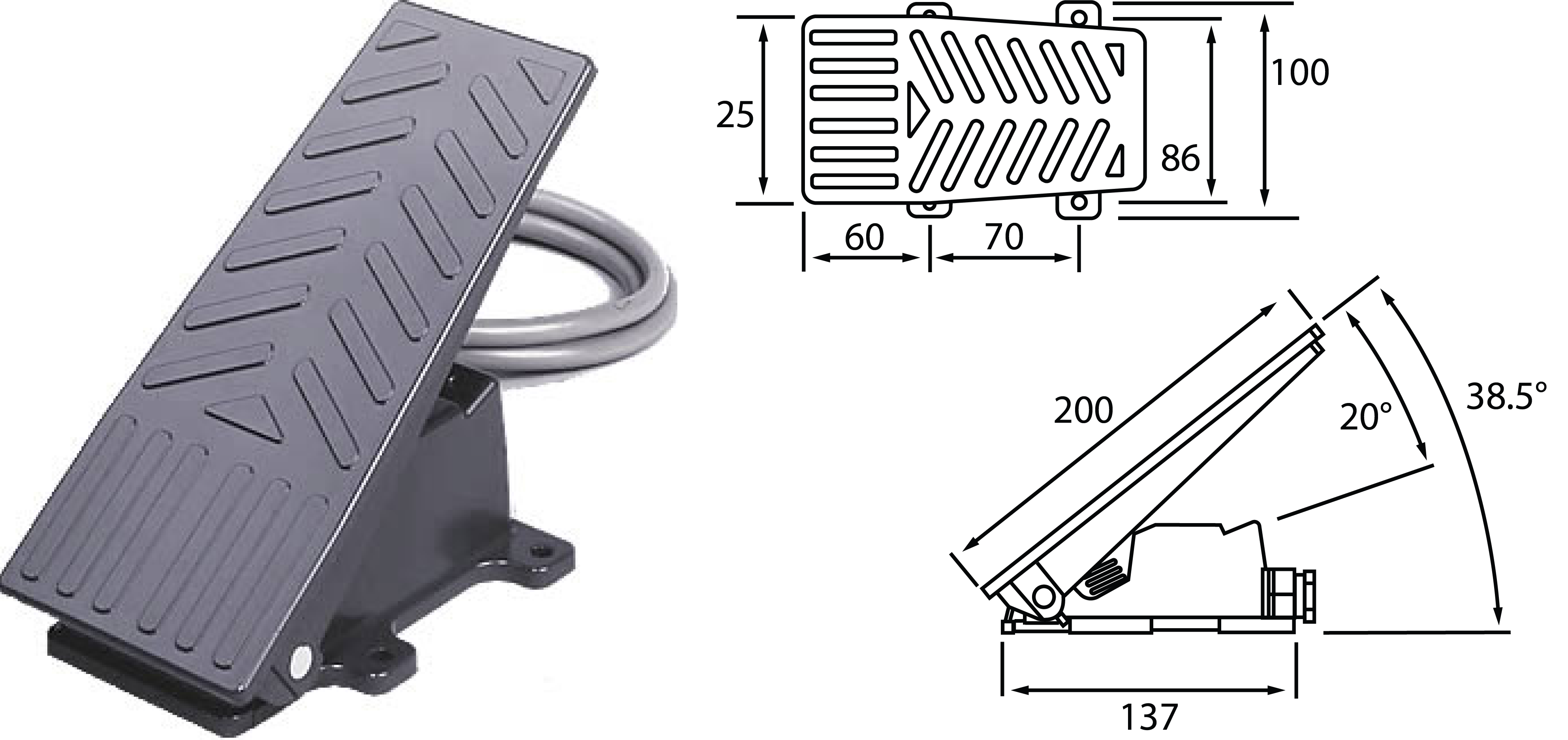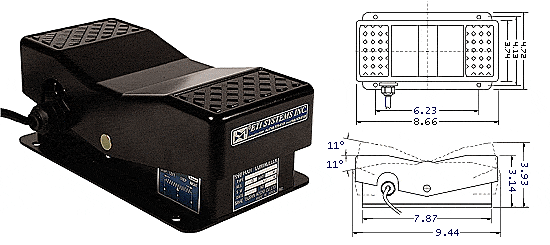In the dynamic world of industrial automation, efficiency isn’t just a goal—it’s a necessity. Among the myriad of tools that enhance productivity, industrial foot controllers stand out for their unique ability to blend functionality with ease of use.
Often overlooked, these controllers are pivotal in various industrial applications, allowing operators to perform tasks hands-free while maintaining precision and control.
In this blog, we focus on the industrial foot controllers, exploring their features, benefits, and how they are revolutionizing efficiency in industrial settings.
Understanding Industrial Foot Controllers

Industrial foot controllers, essentially a type of switch or control interface operated by foot, have become integral in streamlining operations across numerous industries. These devices allow operators to control machinery or processes while keeping their hands free for other tasks, thereby enhancing multitasking and operational efficiency.
There are various types of foot controllers, ranging from simple on-off switches to more complex, multi-functional units that can control speed, direction, and other variables. Some are designed for heavy-duty applications, equipped to withstand harsh industrial environments, while others offer delicate control for precision tasks.
Their versatility makes them suitable for a wide array of applications, including manufacturing, medical procedures, and even musical performances. By understanding these controllers’ fundamental aspects, industries can leverage their potential to maximize productivity and safety in the workplace.
Boosting Efficiency with Foot Controllers
Industrial foot controllers play an important role in elevating efficiency within the industrial sphere. Their primary benefit lies in enabling hands-free operation, which allows workers to engage in multiple tasks simultaneously without compromising precision or control. This multitasking capability significantly streamlines processes, reducing the time and effort required for complex operations.
For instance, in assembly lines, foot controllers can expedite production by allowing operators to adjust machine speeds or activate equipment while handling materials or tools. In high-precision environments like surgical theaters or detailed manufacturing, they offer the advantage of steady, uninterrupted control, minimizing errors and enhancing output quality.
Additionally, in settings where safety is paramount, such as heavy machinery operation, foot controllers can provide quick and easy access to emergency stops or safety functions, further streamlining workflow and reducing the risk of accidents. By integrating foot controllers, industries not only boost their operational efficiency but also create a safer, more ergonomic workspace.
Key Advantages of Industrial Foot Controllers
The adoption of industrial foot controllers comes with a host of advantages that go beyond just improving efficiency.
- Firstly, these devices significantly enhance workplace safety. By enabling operators to maintain a safe distance from dangerous machinery or to quickly execute emergency stops, foot controllers reduce the risk of accidents.
- Secondly, they contribute to better ergonomics. Operators can avoid repetitive strain injuries often associated with hand-operated controls, as foot controllers allow for a more natural body posture during long hours of operation.
- Another key advantage is their adaptability. Many industrial foot controllers are customizable, allowing for specific settings that match the exact needs of different applications. This flexibility ensures optimal control, whether in delicate tasks requiring fine adjustments or in rugged environments demanding robust and durable controls.
- Moreover, the reliability of these devices, often built to endure harsh conditions and continuous use, ensures consistent performance, which is critical in maintaining uninterrupted industrial processes.
Selecting the Ideal Foot Controller
Choosing the right industrial foot controller is pivotal for achieving the desired efficiency and safety in any industrial setting. When selecting a foot controller, it’s important to consider the specific demands of your application. Durability is key in harsh industrial environments, so look for controllers built to withstand extreme conditions.
For precision tasks, opt for controllers with fine-tuning capabilities. Compatibility with existing machinery and processes is also important; ensure the controller integrates seamlessly with your equipment.
Additionally, consider the ergonomics of the device—comfortable, user-friendly designs can significantly reduce operator fatigue. Assessing these factors will lead you to a foot controller that not only meets your operational requirements but also enhances overall productivity and safety.
The Best Products We Offer
Key Takeaways
In summary, industrial foot controllers are indispensable tools in the realm of modern industrial automation. They offer a blend of safety, efficiency, and ergonomic design, important for enhancing productivity and operational excellence. By understanding their functionality, benefits, and selection criteria, industries can significantly optimize their processes. Embracing these innovative controllers is a step towards a more efficient, safe, and productive industrial environment.
Click here to learn more about ETI Systems’ Industrial Foot Controllers.
